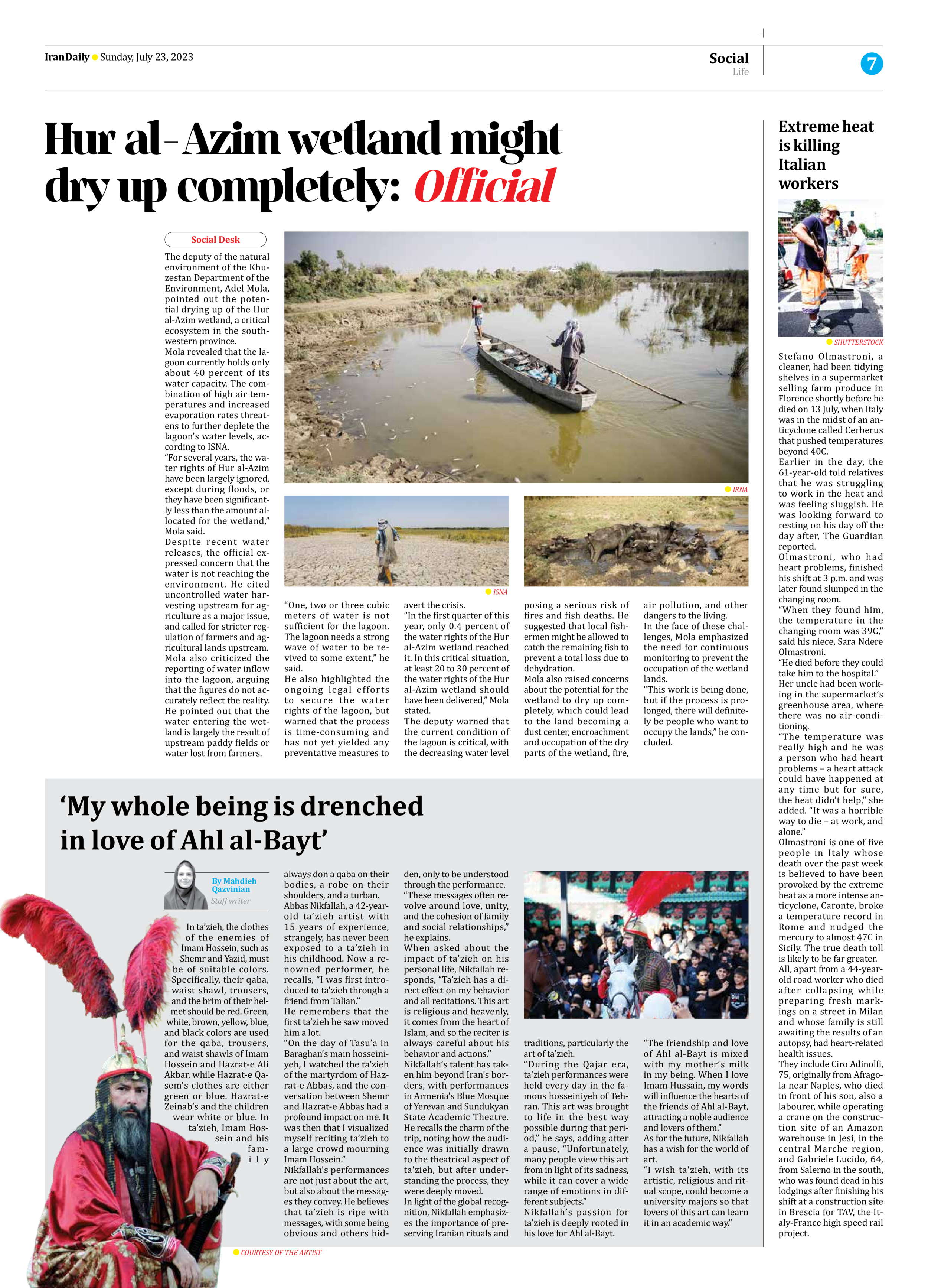
‘My whole being is drenched in love of Ahl al-Bayt’
By Mahdieh Qazvinian
Staff writer
In ta’zieh, the clothes of the enemies of Imam Hossein, such as Shemr and Yazid, must be of suitable colors. Specifically, their qaba, waist shawl, trousers, and the brim of their helmet should be red. Green, white, brown, yellow, blue, and black colors are used for the qaba, trousers, and waist shawls of Imam Hossein and Hazrat-e Ali Akbar, while Hazrat-e Qasem’s clothes are either green or blue. Hazrat-e Zeinab’s and the children wear white or blue. In ta’zieh, Imam Hossein and his family always don a qaba on their bodies, a robe on their shoulders, and a turban.
Abbas Nikfallah, a 42-year-old ta’zieh artist with 15 years of experience, strangely, has never been exposed to a ta’zieh in his childhood. Now a renowned performer, he recalls, “I was first introduced to ta’zieh through a friend from Talian.”
He remembers that the first ta’zieh he saw moved him a lot.
“On the day of Tasu’a in Baraghan’s main hosseiniyeh, I watched the ta’zieh of the martyrdom of Hazrat-e Abbas, and the conversation between Shemr and Hazrat-e Abbas had a profound impact on me. It was then that I visualized myself reciting ta’zieh to a large crowd mourning Imam Hossein.”
Nikfallah’s performances are not just about the art, but also about the messages they convey. He believes that ta’zieh is ripe with messages, with some being obvious and others hidden, only to be understood through the performance.
“These messages often revolve around love, unity, and the cohesion of family and social relationships,” he explains.
When asked about the impact of ta’zieh on his personal life, Nikfallah responds, “Ta’zieh has a direct effect on my behavior and all recitations. This art is religious and heavenly, it comes from the heart of Islam, and so the reciter is always careful about his behavior and actions.”
Nikfallah’s talent has taken him beyond Iran’s borders, with performances in Armenia’s Blue Mosque of Yerevan and Sundukyan State Academic Theatre. He recalls the charm of the trip, noting how the audience was initially drawn to the theatrical aspect of ta'zieh, but after understanding the process, they were deeply moved.
In light of the global recognition, Nikfallah emphasizes the importance of preserving Iranian rituals and traditions, particularly the art of ta’zieh.
“During the Qajar era, ta'zieh performances were held every day in the famous hosseiniyeh of Tehran. This art was brought to life in the best way possible during that period,” he says, adding after a pause, “Unfortunately, many people view this art from in light of its sadness, while it can cover a wide range of emotions in different subjects.”
Nikfallah’s passion for ta’zieh is deeply rooted in his love for Ahl al-Bayt.
“The friendship and love of Ahl al-Bayt is mixed with my mother’s milk in my being. When I love Imam Hussain, my words will influence the hearts of the friends of Ahl al-Bayt, attracting a noble audience and lovers of them.”
As for the future, Nikfallah has a wish for the world of art.
“I wish ta'zieh, with its artistic, religious and ritual scope, could become a university majors so that lovers of this art can learn it in an academic way.”







